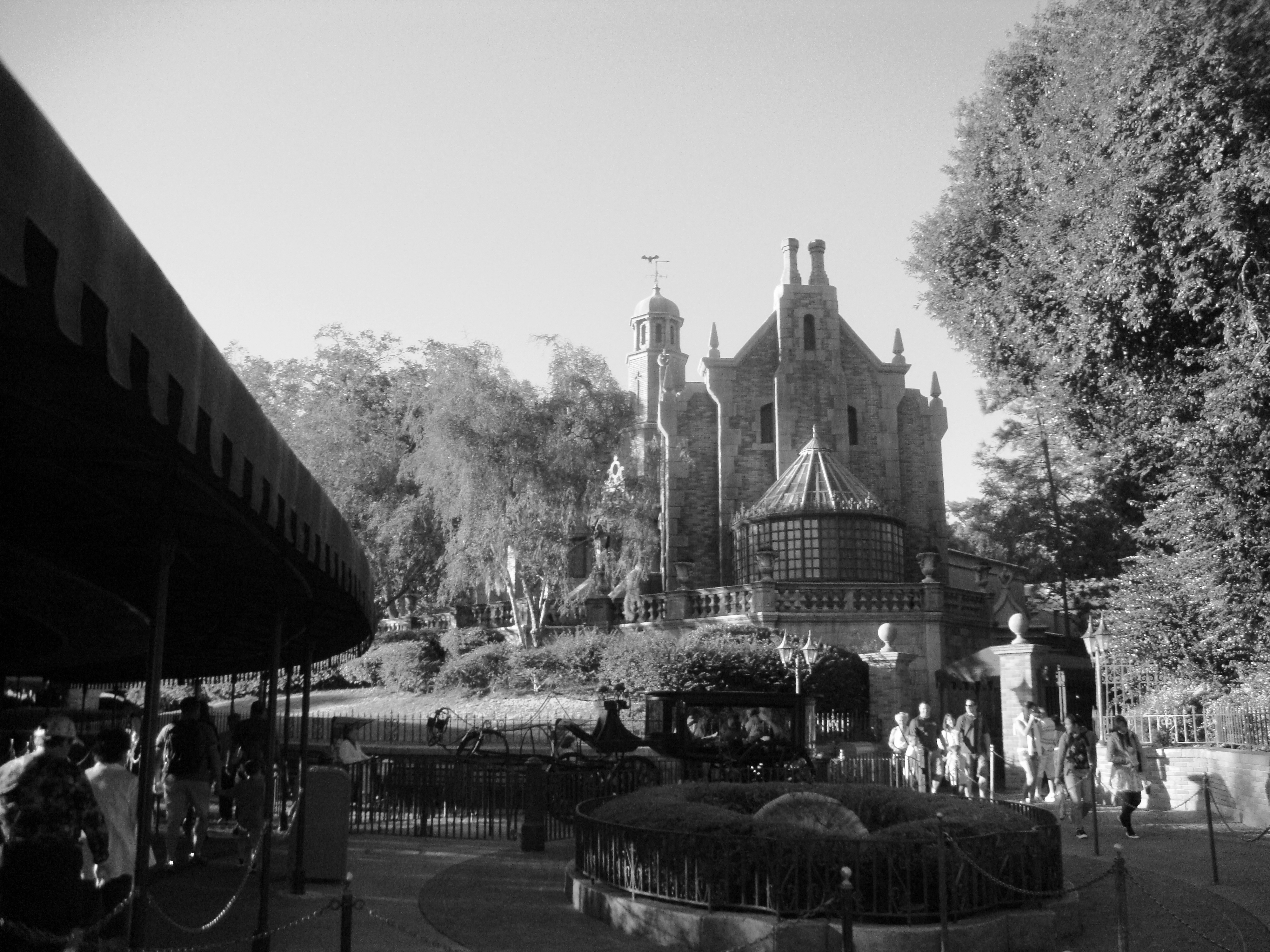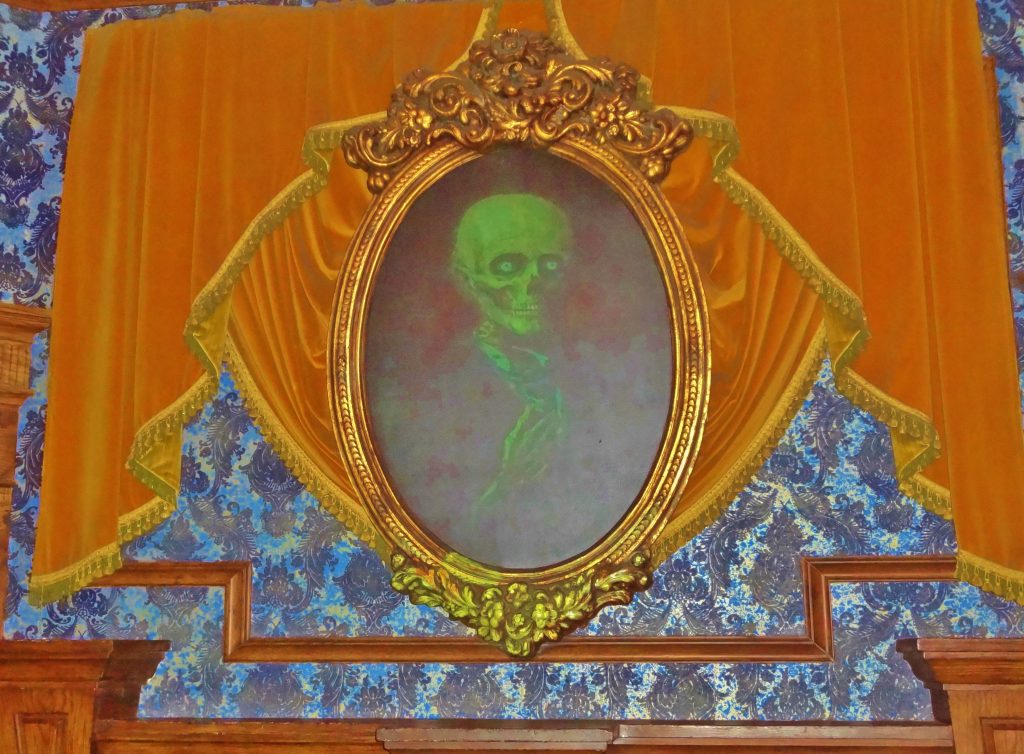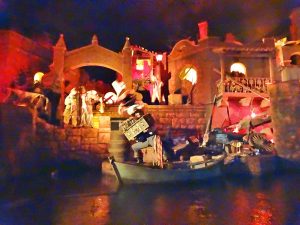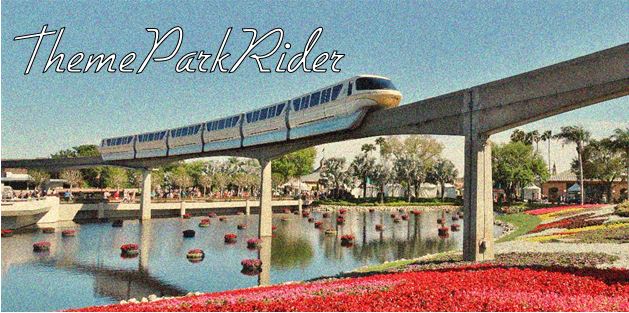In life, whether you’re watching a Broadway Show, a live band, or your favorite action film, one of the most unappreciated aspects is the sound design. Generally, the audience only notices it when something goes wrong (I bet you weren’t really thinking about the singer’s microphone until you heard that horrible screeching feedback). In this article, I will discuss the use of diegetic sound in Disney rides – more specifically, within the music soundtrack of the rides.
Jump to:
Haunted Mansion
Pirates of the Caribbean
Your typical film will have a mixture of various elements regarding sound design: dialogue, ambient sound, source music, etc. Now the difference between source music and the overall soundtrack is simple: source music will take place within the world of the characters: for example, music playing in the car. The soundtrack (or score) is only heard by the audience to set the
tone. If you just read those explanations and thought of diegetic and nondiegetic sound, you’re 100% right.
I find Disney’s use of soundtrack intriguing because, while in film the score is typically nondiegetic, in Disney rides this is not necessarily the case. To demonstrate this, I’m going to use two of my favorite attractions, Haunted Mansion and Pirates of the Caribbean.
Haunted Mansion

The Haunted Mansion utilizes a soundtrack that consists entirely of diegetic sound. In the entire ride experience, from before you enter the queue to after you exit the crypt, there is not one single instance of nondiegetic music being used. I’ll be referring to the Florida version of the attraction, only because it is a longer experience and I am way more familiar with it.
Foyer

Upon entering the Foyer, the first music we hear is the main theme, Grim Grinning Ghosts, played on a small chamber organ. Diegetic, but asynchronous. Let’s pretend that everything the guests see is part of the onscreen verisimilitude, then there is no onscreen source in sight. Perhaps the performer is a disembodied spirit?
Loading Area
The loading area, or the limbo, uses a slow variation on the main theme using a flute and chimes to impersonate wind.
The Portrait Corrider, Library, Music Room, and Staircase
The next few scenes are accompanied by a solo piano, which we eventually see is being performed by a disembodied spirit.
I’ve heard conjecure that the piano is being played by none other than the ghost host himself. Regardless of who it is, this is synchronous!
Endless Hallway, Corridor of Doors, and Séance Circle
The Hallway of Knocking Doors has more organ, which takes us to the Séance Circle, where the soundtrack provided by the instruments that are floating around in the room. This part is synchronous. There’s also an underlying score that’s hard to categorize, but it resembles the wind score heard in the loading area.
The Ballroom
Probably the most obvious example would be the Ballroom scene. Here the main theme is performed by a phantom organ player as the rest of the ghosts engage in their festivities.
The Attic
The attic has a slight change in pace as it is, I believe, the only time Grim Grinning Ghosts is not the base of the soundtrack. Instead it’s Here Comes the Bride. And its asynchronous, but still diegetic.
Graveyard and Crypt
The Graveyard is also obvious, as all of the ghosts are literally singing and playing their instruments. As guests leave the attraction, they can hear a phantom quintet singing one final verse.
Pirates of the Caribbean
I really like the way they handle it in Pirates of the Caribbean, particularly the Disneyland version. I don’t have anything against the WDW version, but the fact that the ride in its entirety is shorter makes for a significantly less immersive experience.
Blue Bayou
The attraction begins in the Blue Bayou section. After we pass the brass band and ambience of the restaurant, the music solely emanates from an old man playing banjo. If you listen closely, however, you’ll notice that he is very subtly strumming the notes to the main theme: synchronous and diegetic.
The Grotto
After the first drop we briefly hear the main theme. Given that this music contains a full band and there isn’t a living sole in sight, this is decidedly nondiegetic. When analyzing it, it may seem like a weird choice, however when experiencing it in full, it is very fitting. The music feeds off of the excitement of the first drop and acts as an overture for what’s to come. Asynchronous, nondiegetic. The next few scenes that accompany the skeletons are also nondiegetic, and once we see Davy Jones, the organ gives it more of a cinematic undertone, setting us up for the next scene. All are asynchronous.
The Wicked Wench
We find ourselves in a predicament as we pass through a battle between the Wicked Wench, captained by the one and only Hector Barbosa, and the nearby town. This scene has been updated to utilize one of the main themes from the Pirates movies.
The Town

Once we enter the town, the soundtrack becomes diegetic, relying solely on the flute player (still playing variations on the theme), and then finally the musical we’ve all been expecting. Sung by a town of pillaging scoundrels.
Prison, Waterfall, and Finale
Even the drunk pirates in the final shootout are singing the song, albeit in a very, very drunk fashion. There are many purists that would disagree with me, however I love the way the ride concludes. As we journey back up the waterfall, the theme returns back in the style of a cinematic organ (with some voiceover of Davy Jones from the films) that in my opinion punctuates the whole experience very nicely. Asynchronous and nondiegetic.
Sources and links:
Corrigan, Timothy, and Patricia White. The film experience. Boston: Bedford/St. Martins, 2004.
Soundofmagic.com
Doombuggies.com
Tellnotales.com
ThemeParkRider YouTube channel

